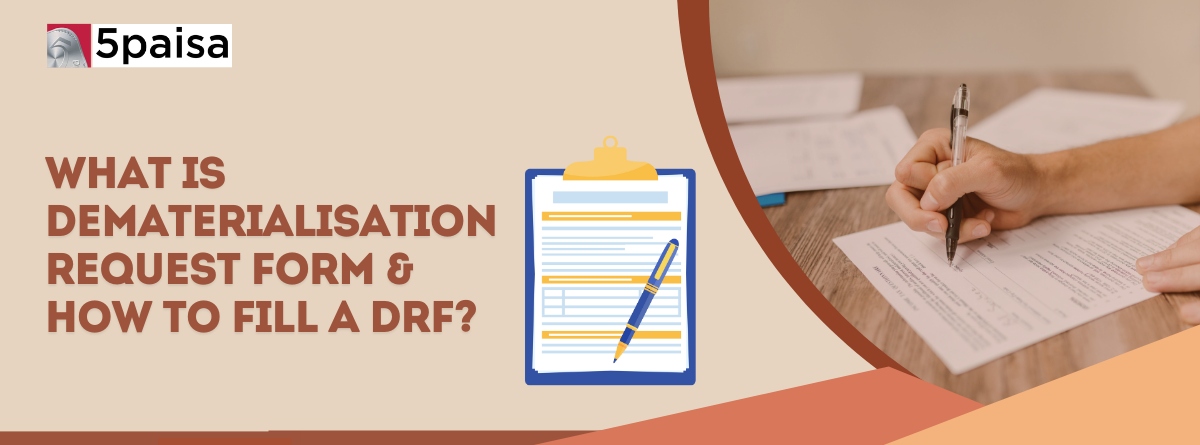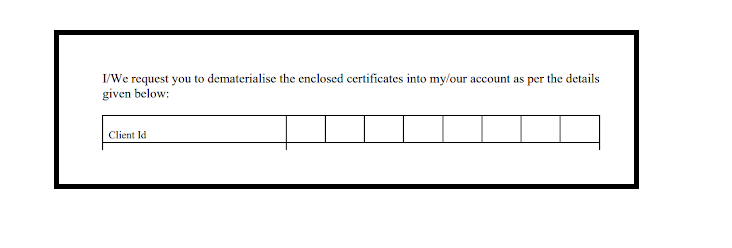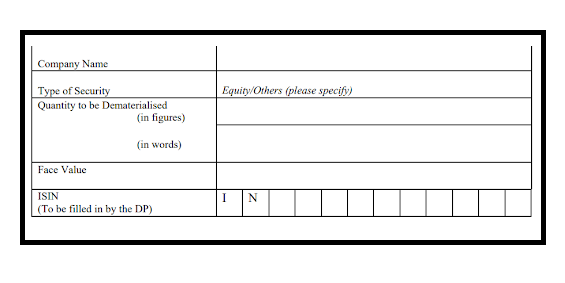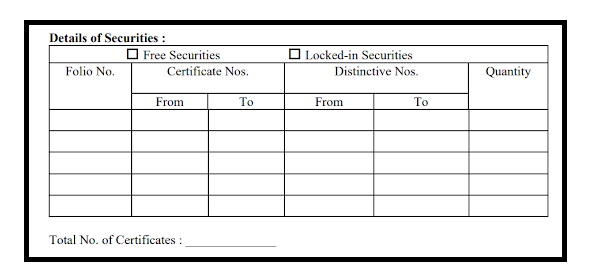Content
- What is a Dematerialisation Request Form (DRF)?
- What are the Types of DRF (Demat Request Form)?
- How to Fill a DRF (Demat Request Form)?
- Conclusion
"Demat Request Form" (DRF), you must have heard of at some point during your investing career. The Demat (Dematerialisation) account has made it easier and more accessible to invest in securities like stocks, bonds, and mutual funds in the contemporary financial world. You can hold your securities electronically with a demat account, doing away with the requirement for paper certificates.
You must fill out a Demat Request Form, also known as the DRF form, in order to start the process of converting your paper share certificates into an electronic format or moving your shares across Demat accounts.
We will go into the specifics of what a DRF is, its types, and how to fill it out appropriately in this article.
More Articles to Explore
- Difference between NSDL and CDSL
- Lowest brokerage charges in India for online trading
- How to find your demat account number using PAN card
- What are bonus shares and how do they work?
- How to transfer shares from one demat account to another?
- What is BO ID?
- Open demat account without a PAN card - a complete guide
- What are DP charges?
- What is DP ID in a demat account
- How to transfer money from demat account to bank account
Disclaimer: Investment in securities market are subject to market risks, read all the related documents carefully before investing. For detailed disclaimer please Click here.
Frequently Asked Questions
A Demat account stores your shares and investments electronically, while a trading account lets you buy and sell those shares. Think of the Demat account as a storage space and the trading account as the tool for making transactions.
Yes, many service providers let you submit the Dematerialisation Request Form (DRF) online. It’s best to check with your provider for their specific process.
Yes, a small fee is charged to convert physical shares into electronic form. The fee depends on the number of shares you're converting.
It usually takes about 15 to 30 days to complete the dematerialisation process once you submit the DRF form.
Yes, you can convert jointly held shares. Just make sure that all the joint holders sign the DRF form and provide the required details.









